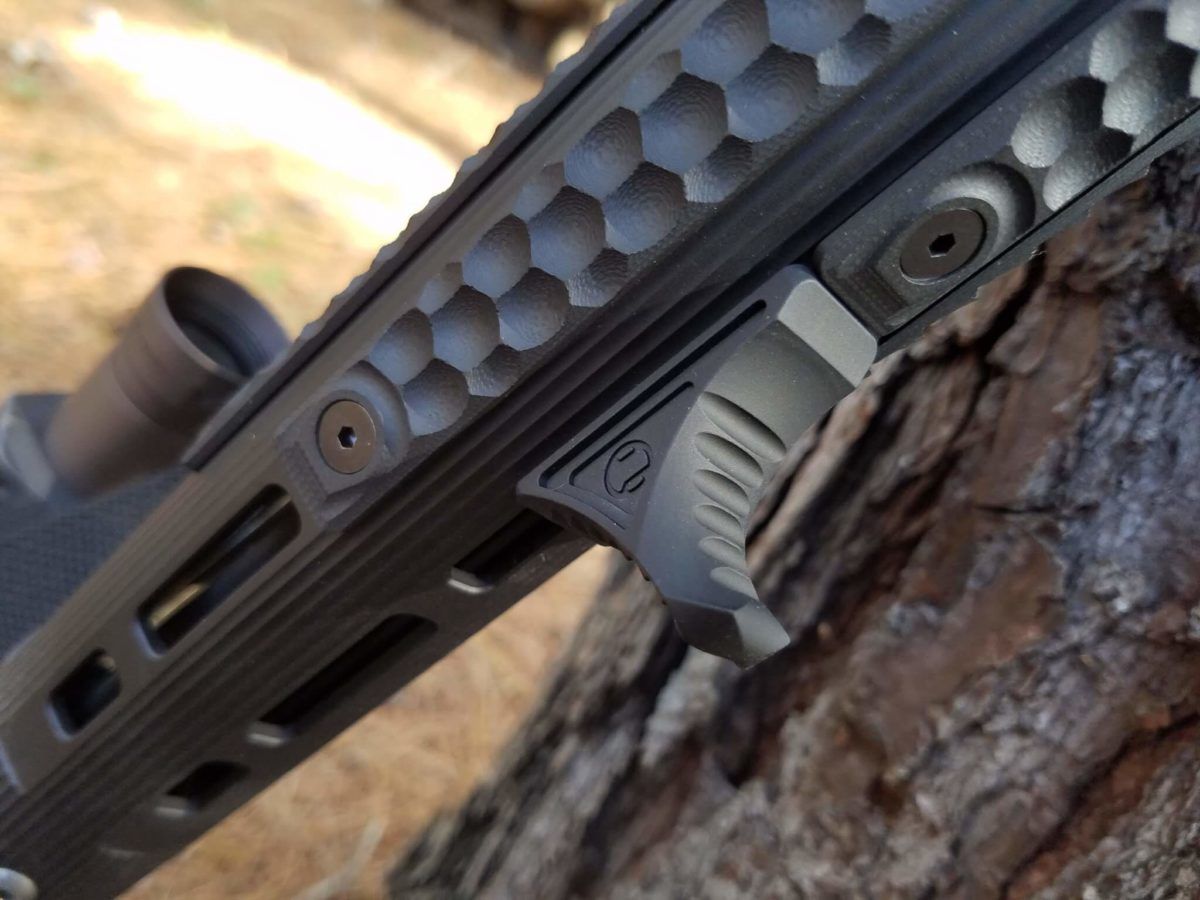
What are the best AR-15 foregrips out there today? When it comes to adding accessories to a rail or handguard, one of the first things most shooters look at is a foregrip. Tackling the subject of what is the best AR-15 forgrips for your build is more complicated than it might seem. Much of the appeal of each type of grip will be based on hand position while shooting, materials used, and the actual reason behind adding it.
As such, I will be covering foregrips in three different groups: vertical foregrips, angled foregrips, and “other” types. I will do my best to explain each type’s appeal, along with where they offer the most benefit. As usual, do your homework and figure out what works the best for you.
Best AR-15 Foregrips – What is their Purpose?
Before we get into what are the best AR-15 foregrips for you to consider, it is important to know how to properly use each, as well their purpose. Vertical grips angled grips, and some of the ones in the “other” category are designed to allow the support hand to grip partially on the grip, partially on the rail or handguard, and assist in pulling the gun in closer to the body.
While it is certainly possible to grasp a vertical grip like you would hold the gun’s pistol grip, it isn’t optimal for control. By maintaining pressure on both the rail/handguard and the grip (at least with vertical grips), the shooter can more effectively control any directional recoil the gun may have.
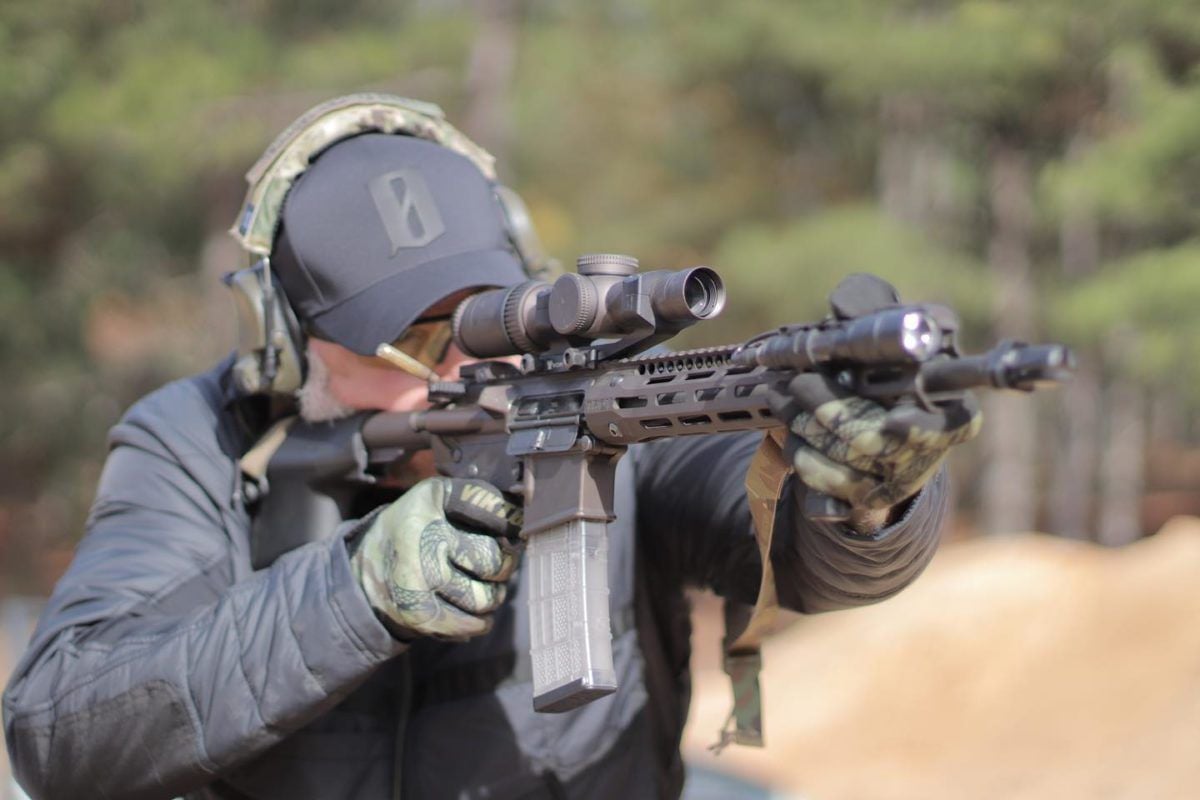
Angled grips, on the other hand, are designed for the hand to be placed completely on them, controlling the gun with the thumb of the support hand. Items in the “other” category will be addressed individually, as they are too varied to cover here.
Best AR-15 Foregrips – Vertical Foregrips
A vertical foregrip is anything that sits at a ninety-degree angle to the rail when mounted, or is marketed as a vertical foregrip (according to the ATF at the time of this article’s writing).
These are an iconic military forend attachment, seeing a great deal of use amongst shooters who hold onto the grip, run their support thumb parallel to the rail (instead of over the top in a “c-clamp”), as well as with shooters that still attach pressure pads to the grips. (Note, that this is falling out of favor with more modern solutions).
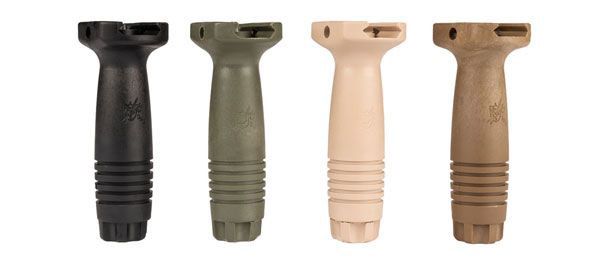
Knight’s Armament – Picatinny Vertical Grip
Vertical foregrips come in a few different sizes ranging from “stubby” grips to the broomhandles of yesteryear. Determine what will be the optimal length for your needs, and then narrow your search from there.
Each company will have its take on the grip, each offering different benefits like QD attachment, molded angles for comfort, and different textures. The right answer to what is the best AR-15 foregrip is whatever feels best to the shooter using it.
Examples of vertical foregrips to research are the Magpul line, Larue Tactical, Troy Combat Grip, Tango Down, Bravo Company Gunfighter grips, Samson, and the Unity Tactical VFG.
There are many others on the market, but I am confident that all of these are solid, reliable offerings, available in different mounting solutions for different rail or handguard types.
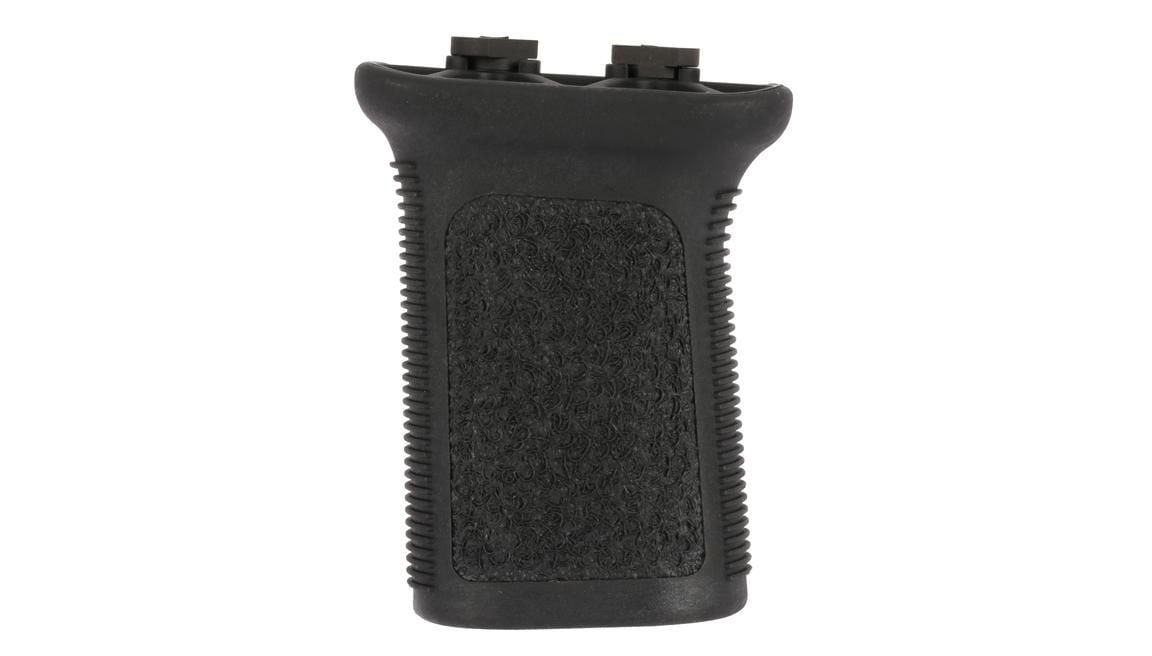
BCMGUNFIGHTER Vertical Grip – MOD 3
Best AR-15 Foregrips – Angled Foregrips
Angled foregrips are generally utilized on AR pistols, as vertical foregrips are not legal on a pistol (I’m aware that if the pistol meets certain length requirements, you can put a vertical grip on it and make it a “firearm” instead). These are also popular with many “c-clamp” shooters due to how the hand fits into the grip.
The angled foregrip list isn’t nearly as in-depth or have as many offerings, as quite frankly, many of the ones being produced don’t hold up well enough under hard use for me to recommend them. There are a few, though, that have been tried and tested to hold up, and I can say with confidence that they are worth checking out.
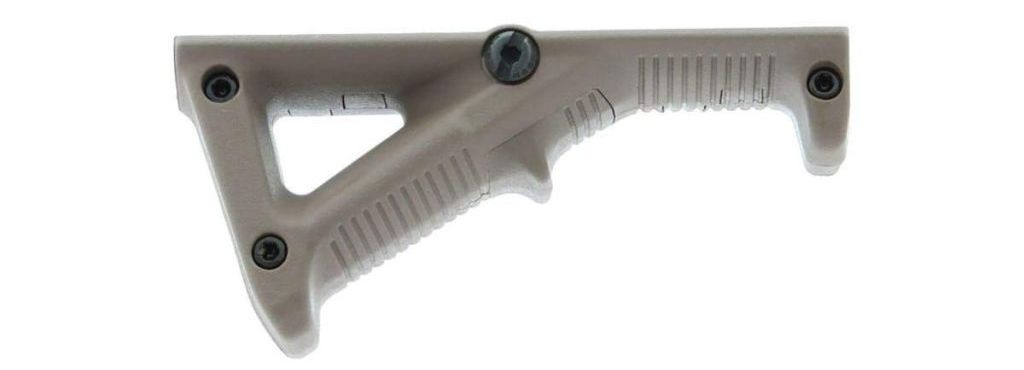
Magpul AFG2 Angled Fore Grip
The two best-known are likely the Magpul AFG and the BCM Gunfighter KAG.
Other Foregrips
This section will be the most diverse, as it includes hand stops, finger stops, and other items that don’t necessarily conform to being a vertical or angled grip.
Each item will have a different purpose, a different design, and likely will not be beneficial to every shooter. With these, you will need to do some experimentation to find what works well for you.
Hand and finger stops are designed to give the shooter tactile feedback on a spot not to move their hand ahead of. Great examples are the Arisaka finger stop, the Knight’s Armament Index Stop, and the Emissary Development Handbrake, the Samson Manufacturing Hand Stop, and the Larue Tactical Handstop.
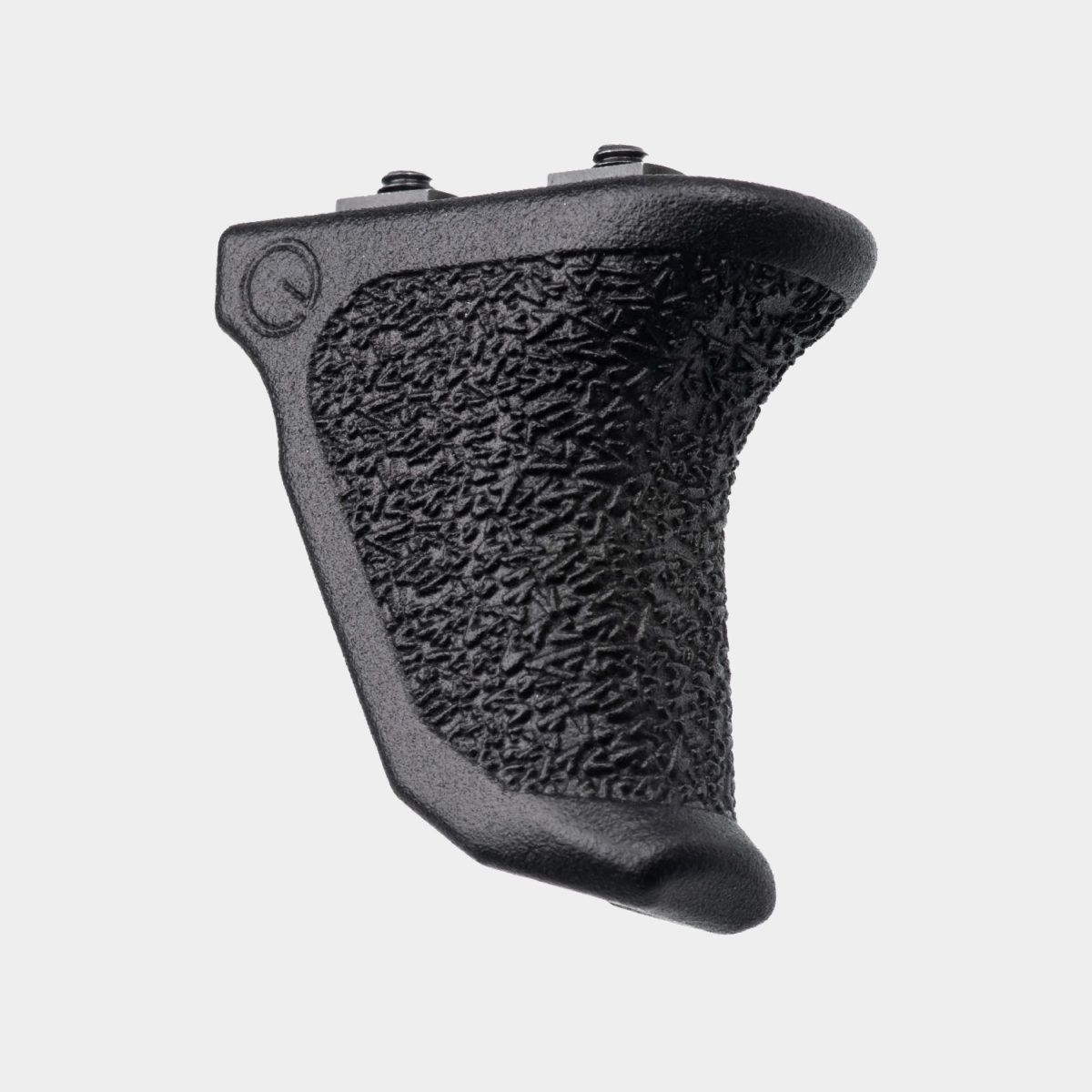
The major difference between the handbrake and finger stop is how the hand is positioned. A handbrake is made to push into, keeping the hand locked in place when it hits the “stop.” The finger stop is designed to sit between the middle and index finger of the support hand, allowing it to position the same every time.
Two items that don’t truly conform to other grip definitions are the Railscales Anchor and LDAG and the True North Concepts GripStop. The Anchor and LDAG are essentially the same product made for different mounting types (the LDAG is for Picatinny rails, the Anchor for M-Lok or keymod).
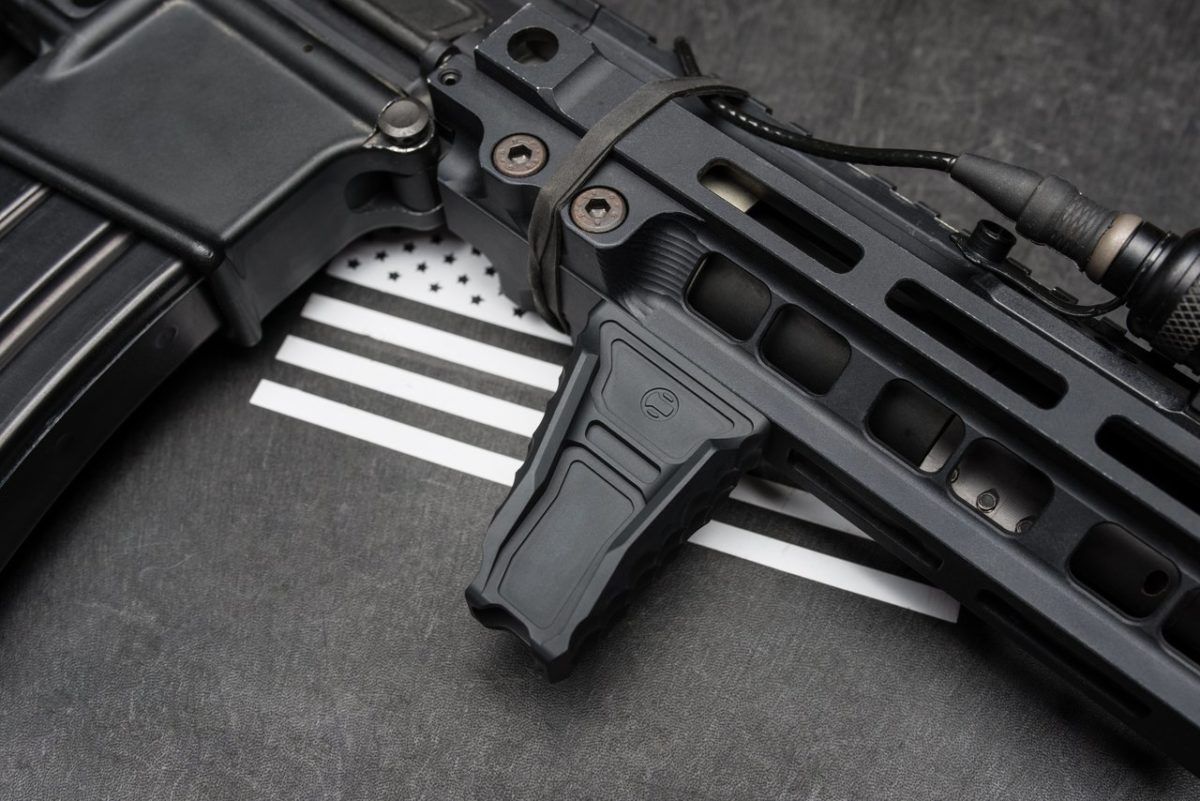
Marketed as a vertical foregrip, it can be mounted backward for a seventy-degree footprint instead, there is debate on whether or not it is still vertical at that point (note: it is marketed as such, and thus the ATF says it is, use your best discretion and err on the side of caution.)
Both the Anchor and LDAG are in high demand, so if this is the grip that appeals to you, get one if you see it.
The True North Concepts GripStop was originally manufactured by B5. After some of the members of the company split off, they took the patent with them and began producing the same component with a different logo.
The True North Concepts GripStop is a curved grip designed to allow the shooter to pull the gun into them without affecting ergonomics. It is also built to be able to brace into barricades when shooting without compromising stability. They are available in two sizes and mounting solutions for M-Lok, Picatinny, and keymod.
Another worth checking out is the Railscales Karve. All three of these grips have different designs and different textures but serve similar purposes (the Kag and the Karve offering a few extra mounting options and mounting positions).
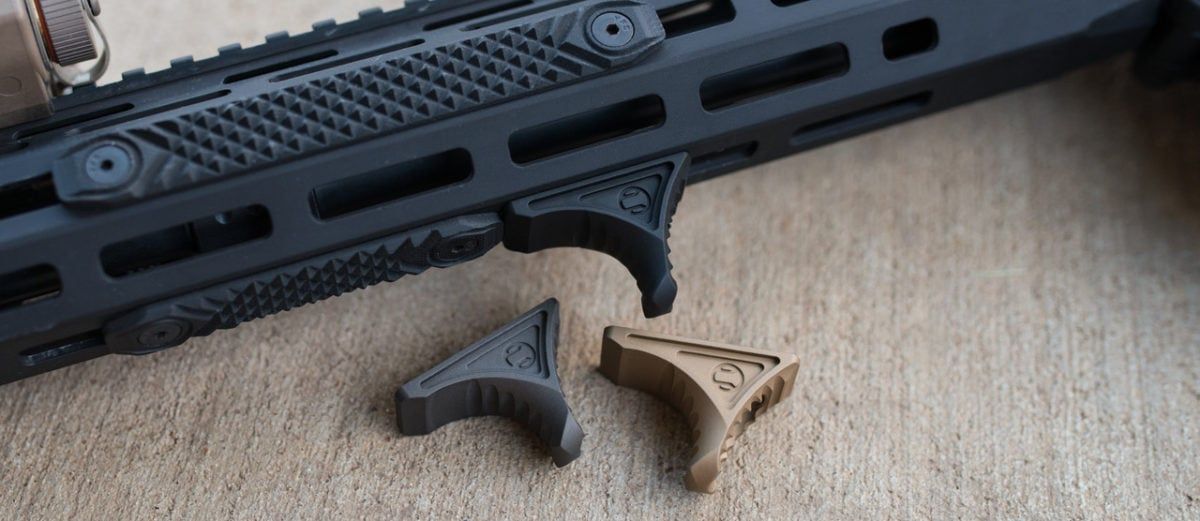
Conclusion
In the end, when it comes to the best AR-15 foregrips, there are many options for foregrip attachments available to shooters. With many factors going into selection and decision on which is the best, each shooter will have to go through some trial and error. Figure out what hand position works best for your shooting style, figure out your needs in terms of positioning, and then read and research.
Avoid foregrips that appear flimsy or that won’t hold up under use, as you will be putting some stress on them when pushing or pulling your gun with them. Do your homework, and don’t sell yourself short on gimmicks. There are some great products out there that can enhance shooting the AR platform.
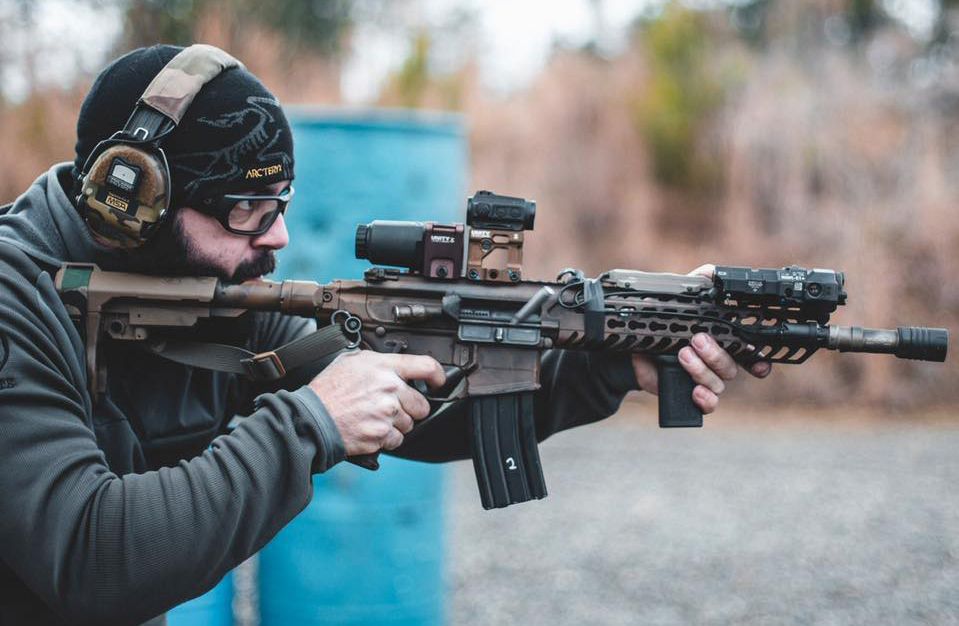
Remember, the key to achieving better shooting is consistently doing things correctly. The right foregrip paired with training proper techniques can help achieve consistency more quickly and efficiently than without one.
###
About the Author
Todd is a gunsmith based out of Las Vegas, Nevada. After receiving his degree from Sonoran Desert Institute, Todd has spent his time building and maintaining a variety of machine guns and product testing for various companies. His main focus is expanding his knowledge on the AR-15 platform and helping bring better quality products to the market for end-users to enjoy. You can read a collection of his past articles here.



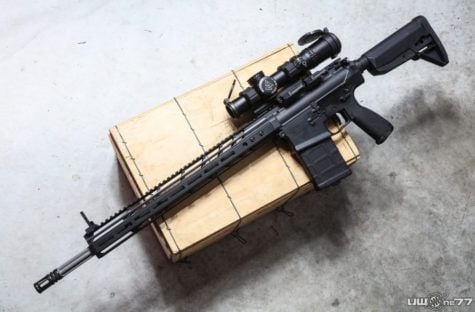

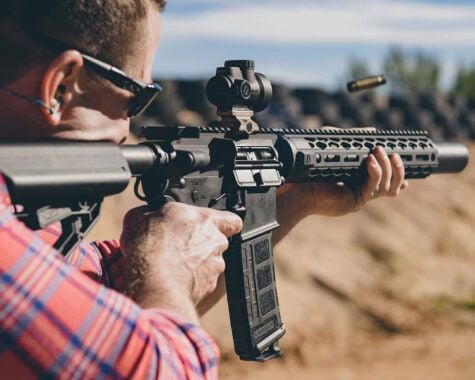
the above picture from Velox is why I prefer the VFG, it give you a nice repeatable guide hand setup while allowing for variations and using it as a monopod
Just to note, that is a SIG MCX, not an AR pattern rifle pictured from Velox. ; )